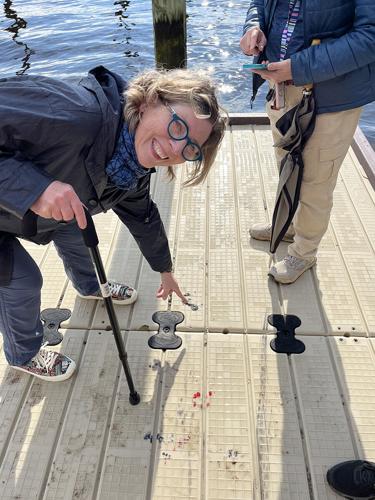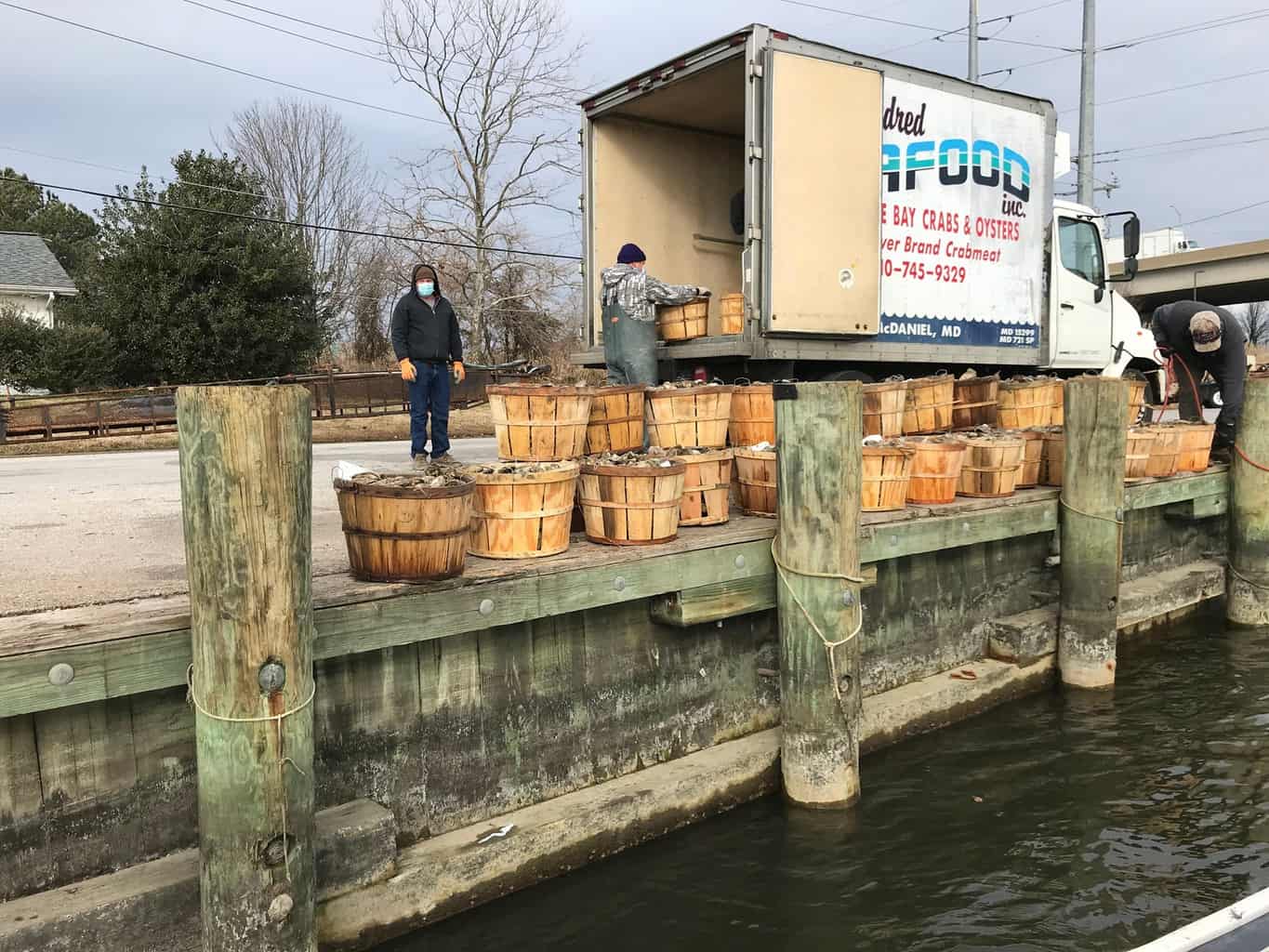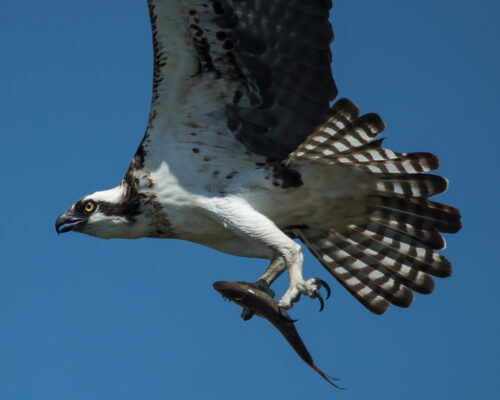Megan Isadore, co-founder of the River Otter Ecology Project, led a nature walk to Plum Point Park in Norfolk on March 23. The group reached a dock—a popular site for evidence, if not sightings, of their favorite critter. Some combed through the shore’s sand, and others scoured the dock.
Finally, they found something. It was otter scat, or poop. While not exactly the cute creature everyone hoped for, they were excited to be on the right track.
In collaboration with the Elizabeth River Project, the River Otter Ecology Project and Fieldscope, a nonprofit data analysis organization, Otter Spotter is a community science program, imported from the West Coast, to assess the otter population in one of Norfolk’s most environmentally challenged waterways. Participation is open to the public.
Isadore started the program in 2012 in San Francisco, where river otters were thought to be extirpated. The animal had essentially disappeared in the area, initially from fur trapping and then from pollution and habitat loss. But Isadore wasn’t convinced they were gone, so she solicited the public to map locations where the public saw or photographed otters. The resulting dataset increased the official California river otter range map by 4,100 square miles.
Now, Isadore is going national, and one of her first stops is the Elizabeth River. Like San Francisco, Norfolk is where water meets urban landscapes and connects to a large bay.
“It’s our serenity within a large urban area,” said Chesapeake resident Angelique Thames, who attended the Otter Spotter presentation at the Pru and Louis Ryan Resilience Lab and Learning Park. “And so, we kind of have that ownership to it and wanting to protect it, keep it safe and keep it clean.”

As the apex predators their food chain, otters need many things to thrive, from plenty of food sources to adequate shelter. So, if an otter is present, there’s a good chance that the ecosystem is fairly healthy.
“The fact that there are river otters here indicates that there are some good things going on in the [Chesapeake] Bay,” Isadore said.
Like the situation out West, trapping took a heavy toll on the otter population in the Bay region, as did water pollution, habitat loss and disruption of natural streams. In Virginia, for instance, their numbers were extremely low by the 1970s, and in 1978 the state both outlawed trapping and added otters to its endangered species list.
The population rebounded fairly quickly, even with the animals’ comparatively slow pace of reproduction. Otters were delisted in Virginia in 1990, though the state continues to restrict trapping to three months of the year. Pennsylvania and Maryland also restrict otter trapping. Isadore believes that has made a difference, but she also attributes their return to the Clean Water Act and Clean Air Act.
Leah Card, a Virginia Department of Wildlife biologist specializing in furbearers — animals trapped for fur — said the state’s river otter population is rising and doing well.
“We only have a few scientists, so having this citizen science project [tell us] where the otters are, note any behaviors — that’s really helpful,” Card said. “I think just getting a better glimpse of what the population is now will help us going forward.”
In California, the data collected by Otter Spotter has helped agencies make decisions on development plans, land usage and oil spill response plans.
Isadore hopes to bring that knowledge to the Chesapeake Bay — and she’s counting on citizens, even outside the Elizabeth River watershed, to join the search and submit their photos at elizabethriverotter.fieldscope.org. The Elizabeth River Project is also offering FieldScope training 5:30–7 p.m. June 20 to teach how to enter the data.

To spot an otter, Isadore recommends not only watching for movement on the water’s surface but also for signs on land, including smashed vegetation, pawprints and especially scat. It’s not unusual to spot them in storm drains, rip rap and gravel bars. They also love docks and are most active at dusk and dawn.
Otters often get confused with muskrats, beavers and nutria. Features unique to otters include a long tail that is a third of its body, extremely smooth fur when wet and a weight of 15–20 pounds — smaller than an adult beaver, but bigger than any muskrat.
While otters are cute, they are wild animals. Isadore recommends maintaining distance.
“I hope people will pay attention to this good news,” Isadore said. “It’s one of our few good news stories that we have these days. And it shows that people can remediate the problems that we’ve caused, and that we need to not give up.”
This story first appeared at bayjournal.com on May 1, 2024.




